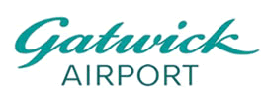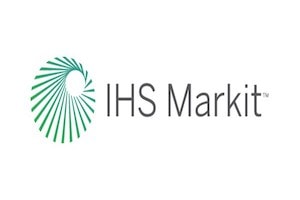You Ask, We Answer: Best-in-Class Database Systems 2025 – Which Tool is Right for Your Workload?
Here at Sirius, we often get asked, "Who is the best database system in the world right now?" This is a critical question, and one that deserves a clear, honest answer. We understand that consumers are obsessed with reviews and rankings, naturally seeking the hierarchy of products before making a major decision.
We want to be fiercely transparent right from the start: The monolithic, one-size-fits-all database is effectively dead. In 2025, the "Best in Class" designation is not held by a single system but is determined entirely by the *specific workload*. While MySQL remains the most installed open-source RDBMS, relying on it as a universal default for complex modern workloads, such as global scaling or Artificial Intelligence (AI) integration, risks significant architectural compromises.
This article will break down the true Best-in-Class systems based on workload specialization, TCO, and the architectural shifts driving the market today, enabling you to build a successful, composable data architecture. Our goal is to become the unbiased authority in this discussion.
Section 1: Defining "Best in Class" in the 2025 Data Ecosystem
The traditional criteria for ranking databases—raw speed or simple feature counts—are insufficient today. The modern "Best in Class" system is defined by specialization, integration, and economic alignment.
1. The Mandate for Composable Architecture
Success is no longer reliant on a single engine. Instead, organizations must deploy Composable Data Architectures, blending specialized systems—transactional, analytical, and vector systems—to achieve optimal performance across disparate workloads.
Specialization vs. Simplicity: While multi-model databases (supporting multiple data types in one system) are growing, dedicated single-model databases often outperform multi-model systems for model-specific, high-value operations. The market trend favors composable structures utilizing specialized systems.
2. Architectural Baseline: AI and Vector Search
A new architectural baseline has been set by the pervasive integration of AI. The combination of "database + vector search" is now the expected minimum feature set for modern systems.
Vector Integration: The core value of vector databases is enabling similarity search for Generative AI applications. Cloud providers are rapidly integrating vector search directly into their managed services, simplifying the AI data stack.
AI/ML Optimization: Advanced systems are now using AI-driven optimization, utilizing predictive performance modeling and automated workload analysis to enhance tuning.
3. TCO and the Serverless Paradigm
The cloud database market is predicted to grow rapidly, driven by the demand for low-latency, globally distributed services. This architectural shift redefines the Total Cost of Ownership (TCO).
Cost Efficiency: Serverless DBaaS (Database-as-a-Service) is emerging as the most scalable and cost-effective deployment model. This model provides effortless, automatic scalability and eliminates the requirement for organizations to over-provision capacity for peak loads, aligning costs directly with workload value.
Section 2: Best-in-Class for Integrity and Transactional Workloads (OLTP)
Traditional Relational Database Management Systems (RDBMS) are the standard choice for highly reliable transactional processing (OLTP) due to their rigorous adherence to ACID properties. The market leaders excel in specific areas of this demanding workload.
| Workload Profile | Best-in-Class System | Justification |
|---|---|---|
| High-Volume OLTP (Read-Heavy Web) | MySQL (Optimized 8.4 LTS) | Superior performance for high-throughput, simple read operations, broad toolset, and development simplicity. |
| Complex OLTP/Data Integrity | PostgreSQL | Highest adherence to SQL standards, superior complex query execution, and MVCC (Multi-Version Concurrency Control) for better write concurrency. |
| Auditing/Compliance Mandates | MariaDB | Native System-Versioned Tables significantly reduce development and compliance risk for data history requirements. |
The MySQL Advantage (Read-Heavy)
MySQL, particularly the optimized 8.4 Long-Term Support (LTS) version, remains a Best-in-Class option for established, simple, high-throughput applications. The InnoDB engine utilizes Row-Level Locking, which is highly effective for concurrency in write-intensive workloads.
The PostgreSQL Advantage (Write-Heavy/Complex)
PostgreSQL is the strategic challenger. Its core design integrates MVCC, which eliminates the need for read-write locks, meaning it naturally excels in handling frequent, concurrent write operations and complex queries. This architectural rigor is why it is preferred by professional developers.
Section 3: Best-in-Class for Scalability and Advanced Workloads
When applications demand global reach, massive scale, or specialized analytical capabilities, the traditional single-node RDBMS systems are architecturally inadequate.
1. Global, Mission-Critical Transactions (Distributed SQL)
Distributed SQL systems are designed to address the inability of traditional RDBMS systems to combine ACID compliance with cloud-native elasticity.
Best-in-Class: CockroachDB (Distributed SQL).
Justification: Provides strong consistency (ACID) with native horizontal scalability, geo-distribution, and automatic sharding, eliminating the operational complexity of manual RDBMS sharding. MySQL's single-server architecture is inadequate for this kind of elastic distribution.
2. Rapid Development and Schema Flexibility (NoSQL)
NoSQL systems dominate when schema flexibility and high write throughput are primary concerns.
Best-in-Class: MongoDB.
Justification: MongoDB is natively built for horizontal scalability, using flexible, JSON-like documents ideal for rapid application development and quickly changing or unstructured data.
3. Hyperscale OLTP and Analytical Dominance
Achieving the highest possible transactional throughput or deep analytical performance typically requires proprietary, vertically integrated cloud architectures.
Best-in-Class (Peak Transactional Throughput): Alibaba PolarDB / Tencent TDSQL.
Justification: These systems demonstrate TPC-C dominance (over 2 billion transactions per minute) by achieving peak performance intrinsically linked to specialized cloud-native architectures co-designed for the database engine.
Best-in-Class (Analytical OLAP): Specialized Cloud Platforms (e.g., Amazon Redshift, Teradata Vantage).
Justification: Specialized cloud-native platforms dominate TPC-H results, confirming that forcing heavy analytical processing onto traditional OLTP systems (like MySQL) leads to bottlenecks when data scale exceeds 10TB.
Conclusion: Strategic Decision Framework for a Composable Data Architecture
The analysis confirms that the "Best in Class" system is entirely dependent on the primary workload and the acceptable trade-offs regarding cost, consistency, and scale.
| Workload Profile | Best-in-Class System | Justification |
|---|---|---|
| High-Volume OLTP (Read-Heavy Web) | MySQL (Optimized 8.4 LTS) | Superior performance for high-throughput, simple read operations, broad toolset, and development simplicity. |
| Complex OLTP/Data Integrity | PostgreSQL | Highest adherence to SQL standards, superior complex query execution, and MVCC capability. |
| Global, Mission-Critical Transactions | CockroachDB (Distributed SQL) | Strong consistency (ACID) with native horizontal scalability, built-in geo-distribution, and automatic sharding. |
| Rapid Development or Unstructured Data | MongoDB | Flexible schema and native horizontal scalability via sharding. |
| Mission-Critical Enterprise (High Budget) | Oracle Database / SQL Server | Delivers specialized, maximum-performance proprietary features and vendor guarantees, despite severe TCO. |
| Generative AI/RAG | Cloud Vector-Enabled DBaaS | Unifies vector search with operational data, simplifying the AI stack and leveraging advanced vector indexes. |
In essence, choosing the right "Best-in-Class" system is about prioritizing which trade-offs you are willing to accept. If you prioritize simplicity and cost for read-heavy operations, MySQL is the winner. If you prioritize globally guaranteed consistency and scale, you must choose a purpose-built system like CockroachDB. For mission-critical, high-compliance systems, the open-source TCO advantage is often secondary to the risk mitigation provided by vendor-guaranteed support and compliance features.
















































